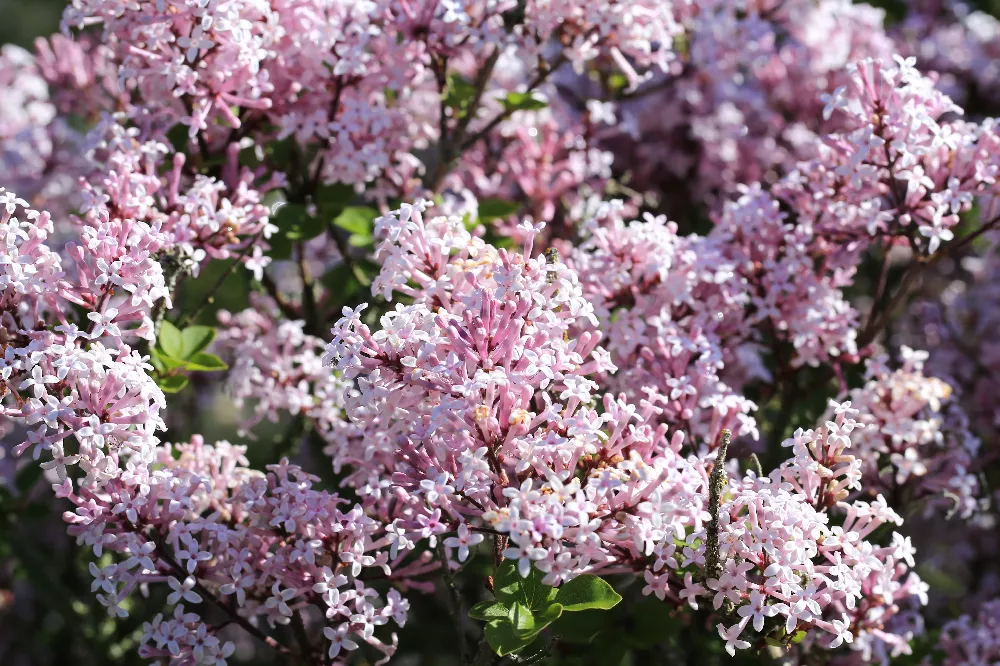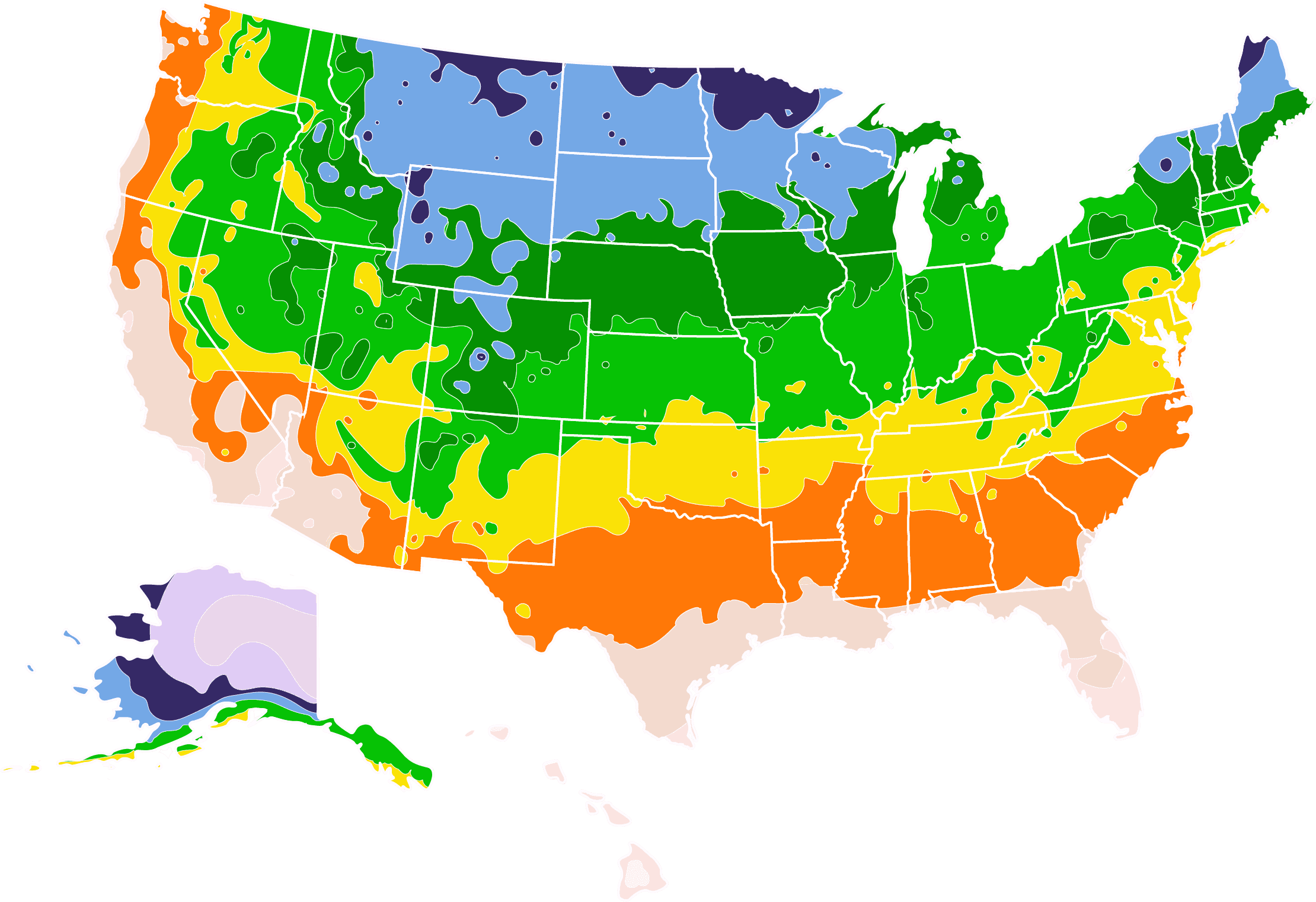- Home >
- Ornamental Trees >
- Miss Kim Lilac Trees
Miss Kim Lilac Trees for Sale
- Ships in 1-2 days
- 1-Year Warranty Eligible
- Pots or accessories are not included unless specified in the product options.
Shipping Details:
Once your order is shipped, you’ll receive an email with a tracking number and estimated delivery date. Most orders ship immediately, but some items are seasonal and may only ship in spring or fall. These products are noted on the website.
Miss Kim lilac trees are a fantastic ornamental plant for those who want a tree that has a manageable size and offers bursts of color. Syringa pubescens subsp. patula 'Miss Kim' has blooms that are incredibly similar to those you would find on a common lilac. It also has a pleasant oval shape and a moderate height of 10 feet at maturity. The other benefit of this plant is that it is resistant to many pests and diseases, including the powdery mildew that can afflict other lilacs. Here are some other common characteristics of Miss Kim lilac trees:
- Fantastic blooms that are both colorful and fragrant.
- Manageable mature size.
- A low maintenance plant.
Plant Care
Sunlight

Full sun exposure is best. Needs at least 6 to 8 hours of sunlight a day.
Watering
Water occasionally. Make sure to soak the soil completely when watering.
Fertilizing

Does not need much fertilizer. Use a balanced fertilizer in early spring.
Planting and Care
Planting instructions
When it comes time to plant a Miss Kim lilac tree, you should find an area that receives six to eight hours of sunlight per day. This species will survive in an area of partial shade as well. However, with less sunlight, the blooms of a Miss Kim lilac tree will be less impressive. Miss Kim lilac trees also enjoy neutral soils that have good drainage. Other than that, you should consider planting this tree where there is a moderate amount of wind exposure. That air circulation will make it less likely that root rot or mildew will appear on the leaves.
Watering and nutrients
In keeping with the notion that Miss Kim lilac trees are easy to care for, you won’t need to water very often. But while watering should be infrequent, you should also make sure that you are generous on the occasions when you do provide water. Supply water to the roots until the soil is completely soaked. Regarding fertilization, you can fertilize a Miss Kim lilac tree in the early spring before the flowers arrive. When you do, use a balanced slow-release fertilizer such as a 10-10-10 mix. But again, this species should remain healthy even if there is a year when you forget to fertilize.
Pollination
The profuse springtime blooms of Miss Kim lilac trees can attract many natural pollinator species. Those species include bees, butterflies, and the occasional hummingbird. With so many of these visitors, a Miss Kim lilac tree will have no issue with pollination.
Pruning
Prune your Miss Kim lilac tree in the late spring just after the flowers have faded. At this stage, you don’t need to be shy about your pruning cuts. A Miss Kim lilac tree can respond well to heavy pruning, which will often lead to vigorous future growth.
Pruning a Miss Kim lilac tree late in the season will not kill it, but it is not a good idea to do so. Miss Kim lilac trees, and other lilac species, set their flower buds on old wood. That means that if you prune later in the season, you risk cutting off the next year’s flowers. This will eliminate one of the most alluring aspects of this plant. So, if you value the blooms of a Miss Kim lilac tree, make sure you do your pruning in the spring just after the flowers fade.
Pests, diseases, and animals
One of the main selling points of this species is that it is resistant to disease. Unlike other lilac varieties, the Miss Kim lilac tree has a strong resistance to powdery mildew. For this reason, this species is often a more reliable version of the common lilac that many gardeners love. The only potential issue for Miss Kim lilac trees is cold exposure. On occasion, a late-season frost can damage new growth.
Achieving maximum results
When working a Miss Kim lilac tree into your planting scheme, you would be wise to take advantage of two of this plant’s most prominent characteristics. The minimal size of this tree allows you to plant it in tight spaces such as foundation beds. The resistance to powdery mildew makes Miss Kim Lilac a great option if you have failed to grow other lilac varieties in the past. But regardless of where you plant this tree, it will give an impressive pop of color to your landscape.
FAQs
How large will a Miss Kim lilac tree grow?
Miss Kim lilac trees remain relatively small throughout their lifespan. At most, these plants will grow to be around nine to 10 feet in height and five to seven feet wide. Often, those dimensions form a neat oval-shaped canopy. While Miss Kim Lilac can reach that size, it is more likely that it will remain smaller. In most cases, these plants tend to be about five feet tall at maturity.
How fast do Miss Kim lilac trees grow?
Miss Kim lilac trees have a slow to moderate growth rate. In most seasons, they will add six to 10 inches of new growth. However, that growth can change depending on how often you fertilize and the type of fertilizer you use.
How long do Miss Kim lilac trees bloom?
The flowers of Miss Kim lilac trees are one of the main reasons why so many people choose to grow them. In an ideal situation, those blooms will be colorful, fragrant, and will cover most of the plant’s canopy. Each year, those blooms will appear in spring and last for a few weeks.









